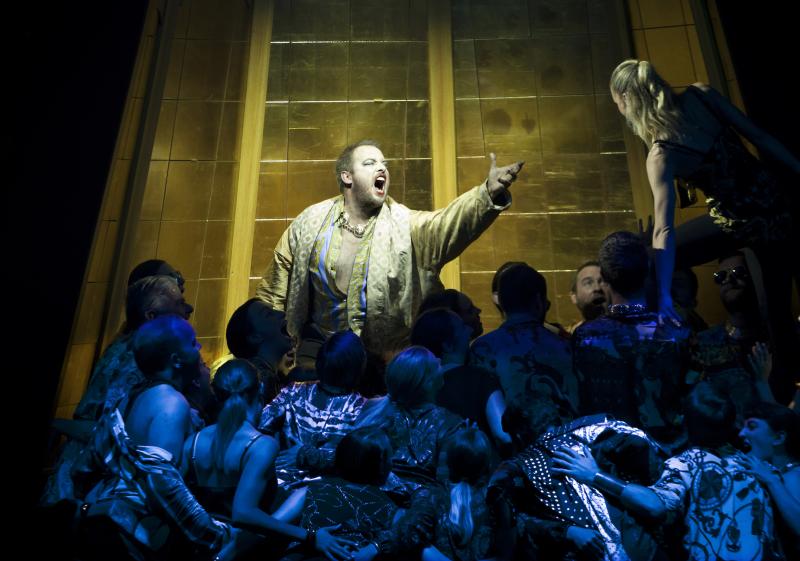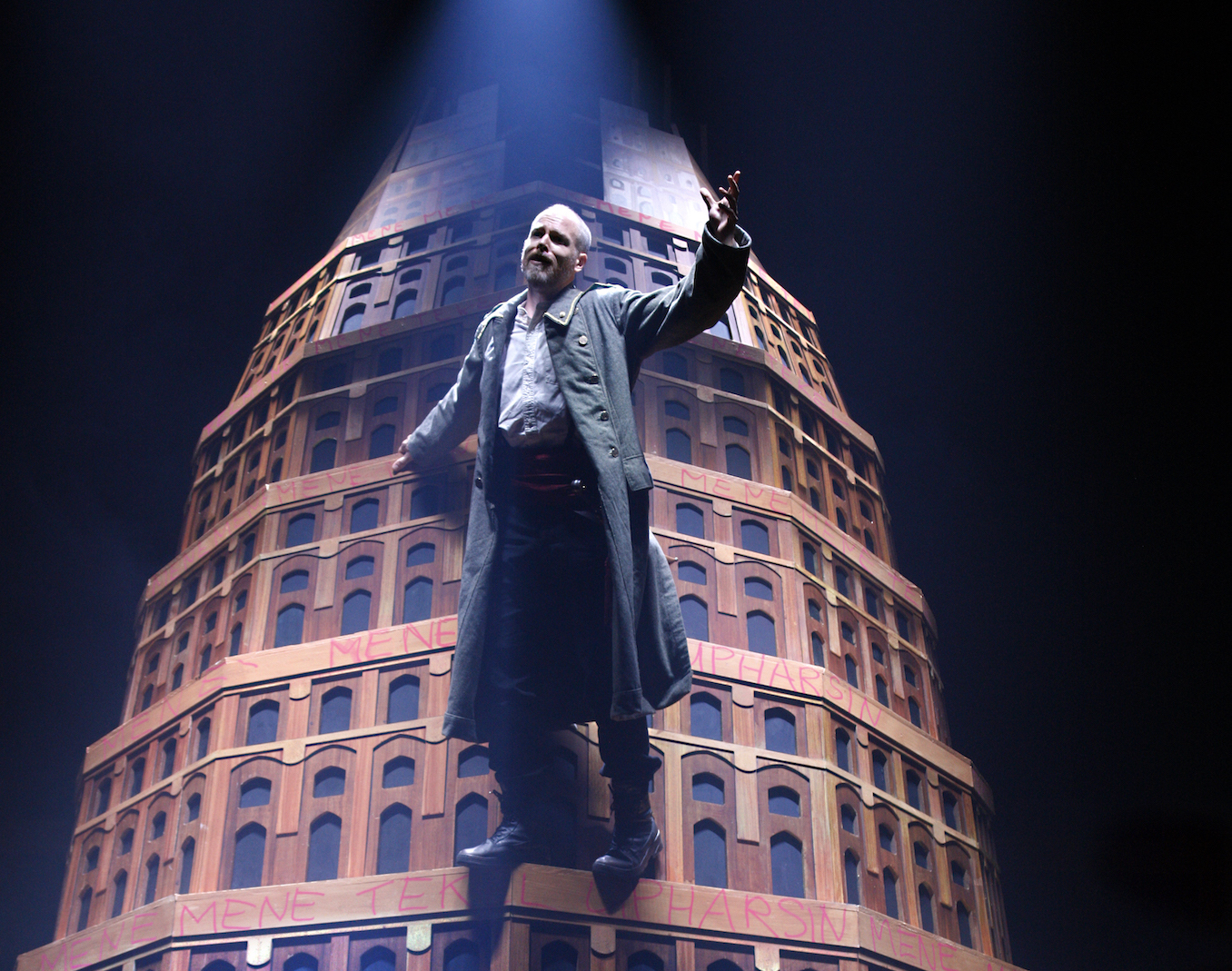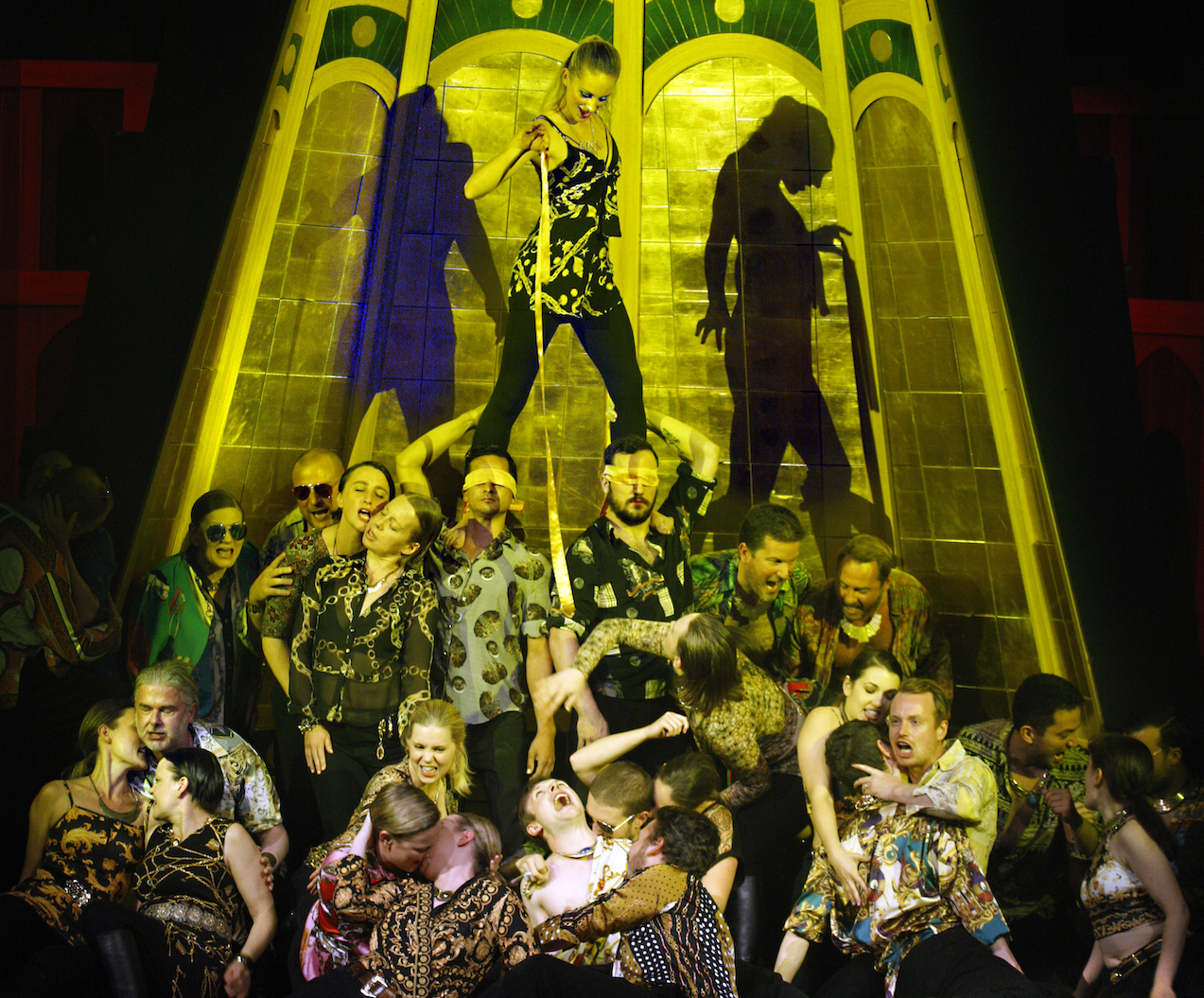Belshazzar, The Grange Festival review – songs of freedom | reviews, news & interviews
Belshazzar, The Grange Festival review – songs of freedom
Belshazzar, The Grange Festival review – songs of freedom
A star choir shines in Handel's tale of luxury brought low

Cut almost anywhere into the lesser-known seams of Handel’s oratorios and you may strike plentiful nuggets of the purest gold. It may not be quite the case that Handel's Belshazzar, its score studded with nearly-forgotten musical treasures, has entirely disappeared from view.
But as a fully-staged piece, as The Grange Festival’s director Michael Chance reminded us after Saturday’s performance, Handel’s story of the fall of Babylon, the triumph of the Persian leader Cyrus, and his liberation of the captive Jews, has dropped into near-oblivion in the country of its origin. At The Grange, Harry Christophers and the choir and players of The Sixteen joined a committed squad of soloists to present Belshazzar as a fully-fledged opera in Daniel Slater's production. It came complete with a revolving Tower of Babel, acrobats gyrating around the king’s debauched court, and the Persian army (at one point) executing a nifty onstage costume change to mutate into a horde of Babylonian party animals.
As director, Slater worked hard, and often cleverly, to inject movement, colour and contrast into Handel’s high-concept, clash-of-civilisations theme. With a libretto by Charles Jennens (he of Messiah fame, or notoriety), Belshazzar resolves the triangular stand-off between sybaritic Babylonians, martial Persians and oppressed Jews into a succession of set-piece choruses, arias, duets and recitatives. For all their frequent splendour, they run the risk of stately immobility once transported to the lyric stage. With that looming tower, the gaudy fabrics and frolics of Belshazzar’s decadent court, and the crenellated walls of Babylon that parted and then closed again, Slater and designer Robert Innes Hopkins snagged the eye with a variety of visual coups. Meanwhile, The Sixteen – their forces enhanced by The Grange Festival Chorus – kept restlessly on the move as well. They morphed into shifting groups of different sizes, as well as switching outfits as they voiced the perspectives of each of this work’s three, mutually suspicious, tribes. In this operatic Belshazzar, much of Slater's stage business earned its keep and made its point – as when the Babylonians in their lurid disco garb mocked the drab Persians from their walls, or the sober-suited Jews in prayer-shawls encircled the night-club kitsch of Belshazzar’s court.
Once or twice, Slater overplayed his hand to the extent that his gimmickry diverted attention from the musical excellence in evidence – above all, from The Sixteen and their allies. They sang, especially in the sublime choruses of the enslaved Jews, with a heart-lifting power that united dazzling vocal discipline with an emotional force that might have knocked down those walls by itself. In numbers such as “Sing, oh ye Heavens”, “Recall, Oh King, thy rash command” and the closing “I will magnify thee”, we have pieces that arguably should rank with the show-stoppers of Messiah. They also pre-date by a century the familiar liberation anthems of Verdi’s Nabucco.

Otherwise, James Laing’s Daniel and Claire Booth’s Nitocris proved the pick of a dramatically engaging cast: his counter-tenor assured but reflective in its gently irresistible appeals to divine and human justice; her soprano radiant but vulnerable, torn between indulgent loyalty to her swinish royal son and sympathy for sagacious Daniel and the dignified Jews, as she sings that “Alternate hopes and fears distract my mind”. As the sottish king, Robert Murray by turns charmed, menaced and repelled, while his richly-coloured tenor sometimes channelled the operatic rulers of a later date than 1744. Among the puritanical Persians outside (then inside) the city walls, Christopher Ainslie’s Cyrus delivered not a straightforwardly heroic counter-tenor but a more subdued, lighter and more anguished reading of the part. Frail-sounding at first, he grew in authority and impact, a humane conqueror who “seeks no enemy except the tyrant” but evidently still feels saddled with doubts about his fitness for the victor’s job. More downright and steadfast, Henry Waddington’s bass lent an affecting mellow gravitas to the grief of the turncoat general Gobrias, pursuing with the Persians his revenge for Belshazzar’s slaughter of his son.

Add comment
The future of Arts Journalism
You can stop theartsdesk.com closing!
We urgently need financing to survive. Our fundraising drive has thus far raised £49,000 but we need to reach £100,000 or we will be forced to close. Please contribute here: https://gofund.me/c3f6033d
And if you can forward this information to anyone who might assist, we’d be grateful.

Subscribe to theartsdesk.com
Thank you for continuing to read our work on theartsdesk.com. For unlimited access to every article in its entirety, including our archive of more than 15,000 pieces, we're asking for £5 per month or £40 per year. We feel it's a very good deal, and hope you do too.
To take a subscription now simply click here.
And if you're looking for that extra gift for a friend or family member, why not treat them to a theartsdesk.com gift subscription?
more Opera
 Cinderella/La Cenerentola, English National Opera review - the truth behind the tinsel
Appealing performances cut through hyperactive stagecraft
Cinderella/La Cenerentola, English National Opera review - the truth behind the tinsel
Appealing performances cut through hyperactive stagecraft
 Tosca, Royal Opera review - Ailyn Pérez steps in as the most vivid of divas
Jakub Hrůša’s multicoloured Puccini last night found a soprano to match
Tosca, Royal Opera review - Ailyn Pérez steps in as the most vivid of divas
Jakub Hrůša’s multicoloured Puccini last night found a soprano to match
 Tosca, Welsh National Opera review - a great company reduced to brilliance
The old warhorse made special by the basics
Tosca, Welsh National Opera review - a great company reduced to brilliance
The old warhorse made special by the basics
 BBC Proms: The Marriage of Figaro, Glyndebourne Festival review - merriment and menace
Strong Proms transfer for a robust and affecting show
BBC Proms: The Marriage of Figaro, Glyndebourne Festival review - merriment and menace
Strong Proms transfer for a robust and affecting show
 BBC Proms: Suor Angelica, LSO, Pappano review - earthly passion, heavenly grief
A Sister to remember blesses Puccini's convent tragedy
BBC Proms: Suor Angelica, LSO, Pappano review - earthly passion, heavenly grief
A Sister to remember blesses Puccini's convent tragedy
 Orpheus and Eurydice, Opera Queensland/SCO, Edinburgh International Festival 2025 review - dazzling, but distracting
Eye-popping acrobatics don’t always assist in Gluck’s quest for operatic truth
Orpheus and Eurydice, Opera Queensland/SCO, Edinburgh International Festival 2025 review - dazzling, but distracting
Eye-popping acrobatics don’t always assist in Gluck’s quest for operatic truth
 MARS, Irish National Opera review - silly space oddity with fun stretches
Cast, orchestra and production give Jennifer Walshe’s bold collage their all
MARS, Irish National Opera review - silly space oddity with fun stretches
Cast, orchestra and production give Jennifer Walshe’s bold collage their all
 Káťa Kabanová, Glyndebourne review - emotional concentration in a salle modulable
Janáček superbly done through or in spite of the symbolism
Káťa Kabanová, Glyndebourne review - emotional concentration in a salle modulable
Janáček superbly done through or in spite of the symbolism
 Buxton International Festival 2025 review - a lavish offering of smaller-scale work
Allison Cook stands out in a fascinating integrated double bill of Bernstein and Poulenc
Buxton International Festival 2025 review - a lavish offering of smaller-scale work
Allison Cook stands out in a fascinating integrated double bill of Bernstein and Poulenc
 Tosca, Clonter Opera review - beauty and integrity in miniature
Happy surprises and a convincing interpretation of Puccini for today
Tosca, Clonter Opera review - beauty and integrity in miniature
Happy surprises and a convincing interpretation of Puccini for today
 Hamlet, Buxton International Festival review - how to re-imagine re-imagined Shakespeare
Music comes first in very 19th century, very Romantic, very French operatic creation
Hamlet, Buxton International Festival review - how to re-imagine re-imagined Shakespeare
Music comes first in very 19th century, very Romantic, very French operatic creation
 Falstaff, Glyndebourne review - knockabout and nostalgia in postwar Windsor
A fat knight to remember, and snappy stagecraft, overcome some tedious waits
Falstaff, Glyndebourne review - knockabout and nostalgia in postwar Windsor
A fat knight to remember, and snappy stagecraft, overcome some tedious waits

Comments
I would be grateful in the
Thanks Tim, that's done.
Thanks Tim, that's done. However, I should point out that the relevant page of the season programme (84) has no choreography credit. BT